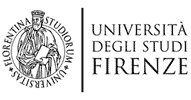International Economics II
CFU: 6
Year: II
Instructor: Giorgia Giovannetti
The main aim of the course is to help understand specific features of the current wave of globalization as well as countries’ and firms’ reactions to it. The first part of the course, after an introduction on how to measure globalization, also accounting for the value added in each country, analyzes historical trends in integration (trade, capital, people, ideas) on the base of existing models of international trade (from Ricardo to models of heterogeneous firms). It also highlights the role of China and India in the global economy. The second part illustrates new issues raised by the globalization process, such as offshoring, outsourcing, and the theories recently developed to address them (‘new new’ trade theories). It also emphasises the role of imported inputs for the competitiveness of a country. Key topics include: globalization: useful definitions; statistical and economic indicators of globalization, specialization, imbalances; Ricardo’s model of International Trade (brief); Hescker-Olin model; Imperfect competition models; geography models; New theory versus New New theory (Melitz); Movements of capital and workers; Offshoring and outsourcing; FDI and multinational. Other topics: R&D internationalization; Migrations; Trade policies and International agreements (TTIP).
Feenstra, R.C., Taylor, A., 2015, International Economics, 4th Edition.
Feenstra, R.C.,2015. Advanced International Trade: Theory and Evidence, second edition, Princeton University Press.


